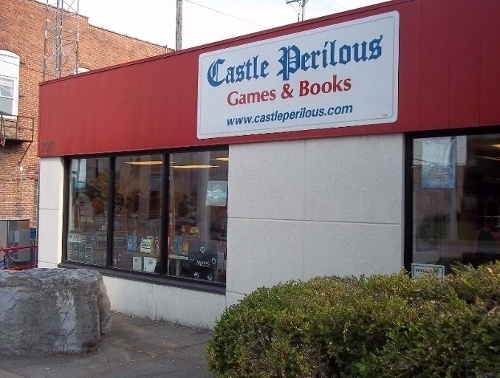Rolling for Initiative is a weekly column by Scott Thorne, PhD, owner of Castle Perilous Games & Books in Carbondale, Illinois and instructor in marketing at Southeast Missouri State University. This week, Thorne applies two concepts from the field of behavioral economics to the business of selling tabletop games.
Listening to the news the other day, I caught a discussion with a professor in the field of behavioral economics relating to why, given all of the evidence science can bring to bear on the topic, a significant number of the U.S. population resists the idea of wearing a mask. He pointed out three factors (there are others but these three were the ones that came up in the course of the discussion) and I got thinking about how these two are applicable in selling someone on a new game (or comic)
Salience. Salience is the concept of knowing about something, how important it becomes to you and how that influences your behavior. If you have heard nothing about a new game, it is very hard to make a decision as to whether or not to purchase it. You may have certain factors you take into consideration when making a decision as to whether or not to purchase a game: is it a worker placement or tile laying game; is it cooperative or competitive; is it suitable for two players or does it work better with a larger number? (We had a customer in today looking for Legacy-style games since she had played the Legacy format of Betrayal at House on the Hill and wanted to see similar games.)
Law of Small Numbers. The Law of small numbers is not a law at all but rather a logical fallacy reflecting the mistaken belief that a small sample accurately reflects a greater population. Take a jar of 1000 marbles, 500 green and 500 yellow. If you pulled 100 marbles randomly from the jar, the law of averages says that you would pull roughly 50 green and 50 yellow, approximating the distribution in the jar. However, if you only pulled 2 or 3 marbles, you would be likely to pull all of one color, leading you to conclude that, since I pulled far more of one color, there must be more of that color in the jar. We can see this regularly in gamers who say, "All my friends love XXXX game. You should expand your selection." They take their experience with the game and generalize it to all gamers or even just to other customers of the store. We see it in the case of our stores as well when store owners and managers say, "Well, that is a dumb thing WOTC, WizKids, Asmodee, etc. did. It will never work." And we may be right, for our store. However, WOTC, WizKids, Asmodee, etc. are looking at the data they have pulled from sales of their products throughout the world at hundreds of stores. Take Magic Theme boosters. After the initial interest, the theme boosters for the past two sets sold extremely poorly here and we will not order upcoming releases. Does that mean they are a failure? Maybe, but WOTC has access to far more data on their sales than I do and should make a decision based upon those far larger numbers.
Meanwhile, I will tell the one customer who gushes about how great theme boosters are that I will happily order them for them. Out of curiosity, how have Theme and Collector Boosters sold for your store? If you wish, email me: castleperilousgames@gmail.com.
The opinions expressed in this column are solely those of the writer, and do not necessarily reflect the views of the editorial staff of ICv2.com.

Column by Scott Thorne
Posted by Scott Thorne on August 24, 2020 @ 3:59 am CT



